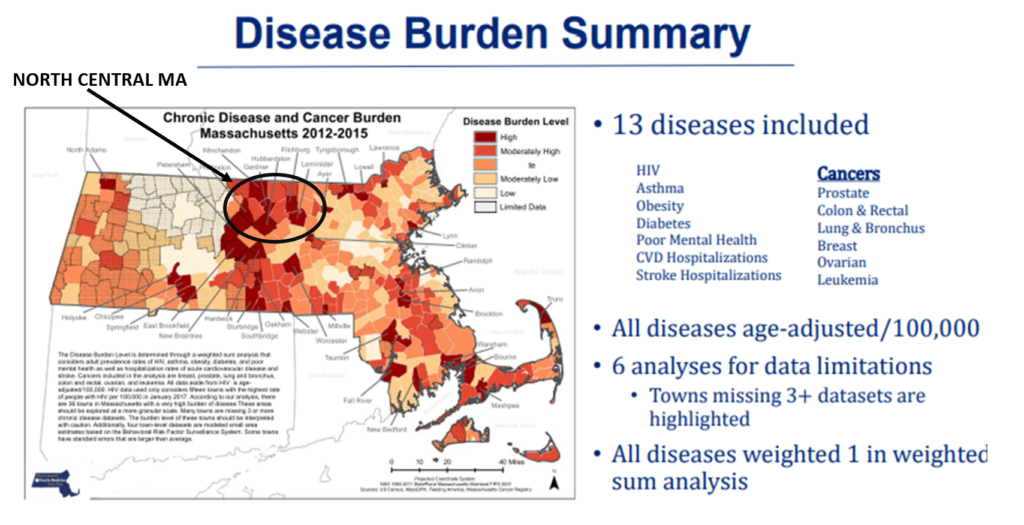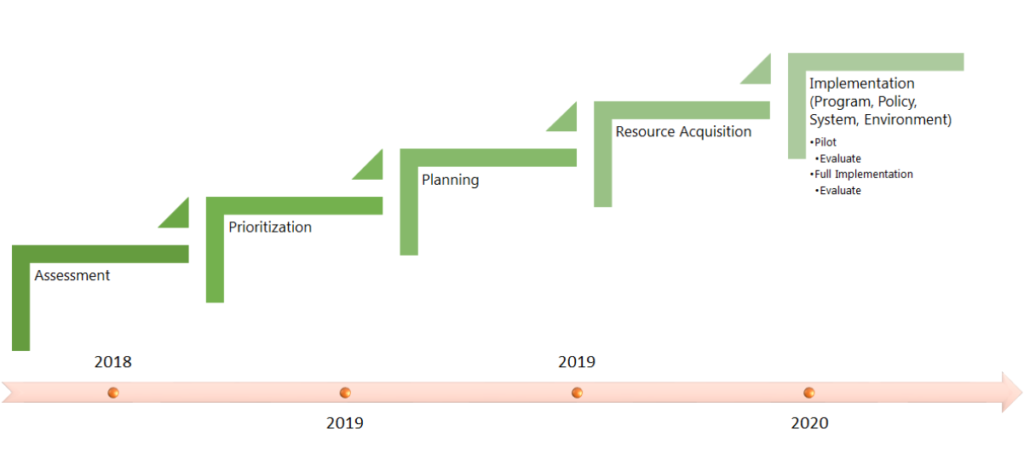HEAL Winchendon is a community-based project dedicated to bringing fresh, healthy food to the town of Winchendon.
BACKGROUND
Growing Places is part of the Healthy Eating Active Living (HEAL) working group of the Community Health Network of North Central Massachusetts (CHNA9). CHNA9 developed a Community Health Improvement Plan (CHIP 2020), which outlines goals and strategies for improving community health.
As part of HEAL, Growing Places’ focus is on the goal to create an environment that supports people’s ability to make healthy eating and active living choices in their community. Improving access to and affordability of fresh fruit and vegetables is a core component of that goal: currently 66% of the region eats just 1-2 servings of fruits and vegetables each day, which is a mere 20% of recommended guidelines. In addition, Harvard Law School did a study on the chronic disease burden in Massachusetts and found North Central Massachusetts to have some of the highest chronic disease rates in the state. The areas with the highest chronic disease also happen to be in “food deserts,” defined as areas with little to no access to healthy, whole foods either because no grocery stores exist or prices are too high. It is common to see food deserts overrun with convenience stores and cheap, processed foods that contribute to disease rates for residents who have no better food alternatives.

Because 80% of health is shaped within communities, our job is to connect the dots between high chronic disease rates in our communities and poor access to healthy food to identify and address the root causes. This process begins with assessment to understand what’s really going on, then prioritizing the greatest need, coming up with a plan for addressing that need, acquiring resources, and, finally, implementation:

WHY WINCHENDON?
As part of the assessment phase, more than 1,000 healthy food access surveys were conducted in five food desert communities in North Central Massachusetts: Winchendon, Gardner, Fitchburg, Leominster and Clinton. Notable findings of these surveys include:
- 33% of individuals identify as food insecure
- 15% of individuals are shopping at dollar stores and convenience stores
- 50% of individuals do not have cars
Next, we had to prioritize which community to focus on first. Winchendon was chosen as the community with the highest need. Relative to state averages, Winchendon has a very high chronic disease burden, low average per capita income, and a high percentage of economically disadvantaged students among other troubling statistics.
In addition, Winchendon lost its only supermarket in 2015. This is a devastating reality for many Winchendon residents. Those who have poor transportation options cannot easily access other grocery stores and the nearest grocery stores either do not accept WIC benefits or have some of the highest prices in the state.
Many have asked: can we get another grocery store? A large and well-known grocery store chain considered moving into the old IGA location. Unfortunately, they conducted an economic feasibility study and concluded that it would not be profitable for them at this time. If the grocery stores won’t come to Winchendon, it is up to us and the community to find a better model that works for everyone!

